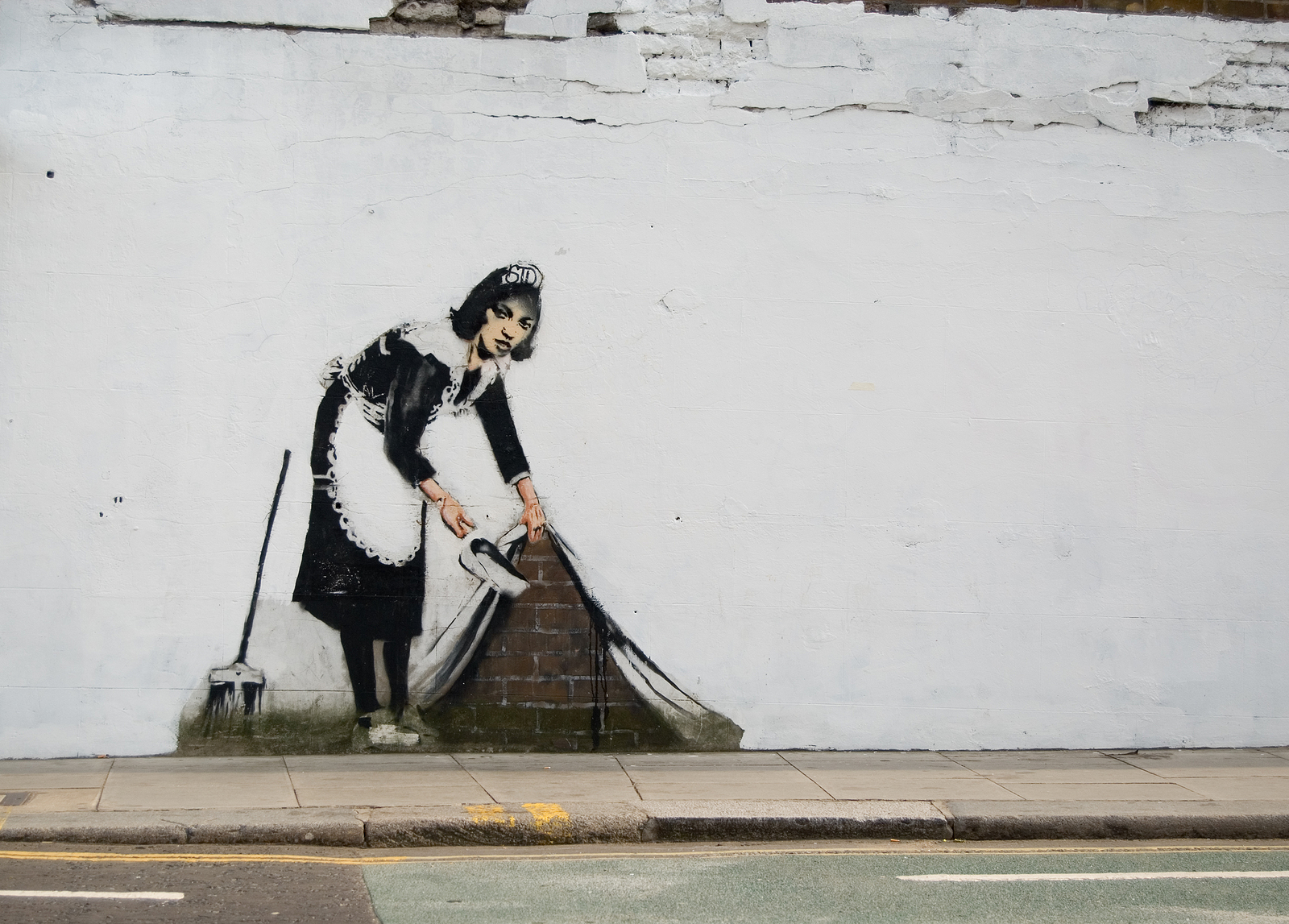Street art is a vibrant and diverse sphere of creative experimentation, with no limits or restrictions on the used materials and techniques. One of its well-known forms is stencil street art, which means the use of stencils to create graffiti. It emerged only around half a century ago and has become widely popular among street artists across the globe, including Banksy. Here is a brief introduction to this art form and its best-known illustrations.
The technique of stencil graffiti
At the heart of stencil street artwork is the usage of pre-cut stencils applied to the walls, with spray or roll-on paint distributed over them to create an image. The stencils are typically cut out of paper or cardboard, though reusable plastic stencils are also in use in many commercial areas.
While some artists place only one layer of paint to create stencil art objects, others overlay several layers and stencils to create the effect of depth or craft more nuanced and detailed images.
Famous examples of stencil street art
The first examples of street art created with the help of stencils emerged in the 1960s. The best-known early work was that of a nuclear bomb victim, painted by Ernest Pignon-Ernest in 1966. John Fekner was also an early adopter of the method; he created the world-known Broken Promises in the late 1960s and then Wheels Over Indian Trails in 1990.
Other stencil art pioneers were Shepard Fairey and Blek Le Rat; the latter built his craft on the NYC street art inspiration but wanted to add a unique twist to his work, which he found in stencils. Blek le Rat became widely known for his stencil depictions of rats and a stencil replica of Caravaggio’s Madonna and Child. He is also credited for expanding stencil art from lettering to full-scale imagery.
Dolk is among the contemporary stencil street artists worth mentioning. This graffiti artist from Norway is famous for many references to pop culture, which he presents in humorous or derogatory contexts. Stencil art fans can embrace Dolk’s art on the walls of major European cities, from Berlin to Oslo, Lisbon, London, and Prague, including the artist’s hometown, Bergen.
Banksy’s stencils
Banksy is probably the most known user and popularizer of stencil street art. He used freehand painting techniques at the beginning of his creative career but was strongly influenced by Blek Le Rat’s artistic approach. Inspired by this art form, Banksy adopted the method to create his most famous works around the world. These include the 2002 Rude Copper, the 2003 Laugh Now, and Girl With Balloons, among many others.

